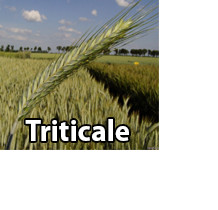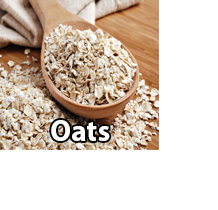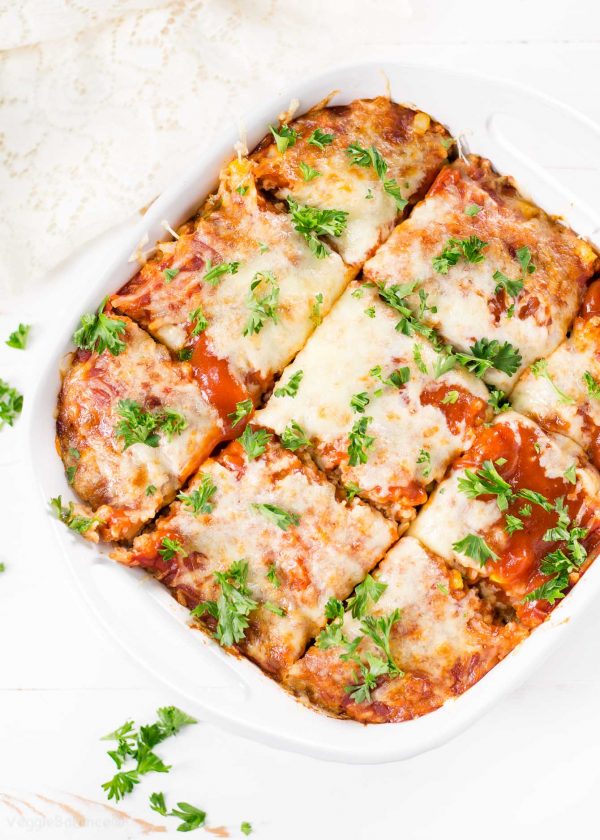Many myths exist surrounding celiac disease, non-celiac gluten sensitivity ('gluten sensitivity') and the gluten-free diet. Celiac disease expert and Beyond Celiac President and CEO Alice Bast debunks common myths in the article below, featured in an abbreviated form on AllergicLiving.com. Myth Busters: Gluten-Free Edition
By Alice Bast

Depending on how long you’ve been gluten-free, you have probably debunked a few myths. No, you did not go gluten-free just to lose weight. No, you really can’t “just try” a bite of that sandwich.This time, the myths come from within the gluten-free community. Yes, with all the information and connections available on the Internet, even our own community struggles with misconceptions from time to time. Here are some of today’s top myths and the truth behind them:
If it says “Manufactured in a facility that also processes wheat,” it’s not safe for people with celiac disease.
 The above is an example of what the FDA calls a voluntary allergen advisory statement. It is different from a “contains wheat” statement, which is required by law and means that the food definitely includes wheat. The voluntary warning, on the other hand, means that the product is not made with those allergens, but there may be a risk of cross-contact in the manufacturing process. The statement can seem alarming, but in some cases it may mean that the company is going above and beyond to let customers know about their processes.
The above is an example of what the FDA calls a voluntary allergen advisory statement. It is different from a “contains wheat” statement, which is required by law and means that the food definitely includes wheat. The voluntary warning, on the other hand, means that the product is not made with those allergens, but there may be a risk of cross-contact in the manufacturing process. The statement can seem alarming, but in some cases it may mean that the company is going above and beyond to let customers know about their processes.If you find a product that is labeled gluten-free but bears a warning like this one, you can rest assured that the product must comply with the gluten-free labeling law. Even though foods can have an allergen advisory statements for wheat, if they are also labeled gluten-free, the product must meet the requirements of the gluten-free labeling rule. Basically, these labels are voluntary and the absence of an advisory statement does not automatically mean a product is produced in a dedicated gluten-free facility.
If you’d like to investigate a product further, Beyond Celiac suggests visiting the company’s website or calling their hotline to learn more about their manufacturing practices. It’s absolutely possible for a manufacturer to produce safe gluten-free food for people with celiac disease using shared equipment or a shared facility, as long as they have the proper sourcing, cleaning, storage, production and testing protocols in place to keep the food safe.
Gluten-free food should contain zero gluten.
 This seems like a simple expectation, but in reality it’s nearly an impossible feat – and one that would severely limit our food supply. Our current methods for gluten detection will test to 3 parts per million (ppm) at the lowest and other more reliable tests will detect as low as 5 ppm. Even if we are able to test for zero ppm in the future, that level would be so strict that it would be likely that many manufacturers simply couldn’t reach it – and those that do would potentially carry an even higher price tag. Most importantly, researchers agree that most people with celiac disease can safely tolerate up to 20 ppm of gluten. Even so, many manufacturers are testing at even lower levels so they can be accessible to more sensitive individuals.
This seems like a simple expectation, but in reality it’s nearly an impossible feat – and one that would severely limit our food supply. Our current methods for gluten detection will test to 3 parts per million (ppm) at the lowest and other more reliable tests will detect as low as 5 ppm. Even if we are able to test for zero ppm in the future, that level would be so strict that it would be likely that many manufacturers simply couldn’t reach it – and those that do would potentially carry an even higher price tag. Most importantly, researchers agree that most people with celiac disease can safely tolerate up to 20 ppm of gluten. Even so, many manufacturers are testing at even lower levels so they can be accessible to more sensitive individuals.Based on testing hundreds of samples of food products labeled gluten-free through Tricia Thompson’s Gluten-Free Watchdog using the formally validated sandwich R5 ELISA Mendez Method, the vast majority of product samples are testing well below 20 ppm.
You can diagnose gluten sensitivity through a blood, saliva or stool test.
 While these tests may be on the market, it’s very important to know that these tests have not been validated and are therefore not accepted by the scientific community. Currently, biomarkers (a specific indicator of disease) for gluten sensitivity have not been identified, which means that gluten sensitivity remains a diagnosis of exclusion.
While these tests may be on the market, it’s very important to know that these tests have not been validated and are therefore not accepted by the scientific community. Currently, biomarkers (a specific indicator of disease) for gluten sensitivity have not been identified, which means that gluten sensitivity remains a diagnosis of exclusion.These types of tests oversimplify diagnosis and may lead to dietary restrictions or other changes in a person’s life that may not be necessary. Currently, the only way to confirm gluten sensitivity is through a process of elimination – by testing negative for celiac disease and wheat allergy and then eliminating gluten under the supervision of a physician or registered dietitian skilled in celiac disease.
Check out the dedicated web section from Beyond Celiac on gluten sensitivity to learn more, including interviews with leading celiac disease experts: www.BeyondCeliac.org/NCGS. You should only use gluten-free shampoo and cosmetics.
 This is a personal decision that each of us can make, but science indicates that gluten in shampoo and cosmetics is not a threat to those with celiac disease – except for those that may be easily ingested, like lipstick or potentially hand lotion. Researchers have found that unless you have a deep and open wound, gluten cannot absorbed through the skin making topical items acceptable for use. (A quick reminder: don’t forget to wash your hands after applying a gluten-containing hair or cosmetic product to avoid any unintentional ingestion.) If you have a reaction to a cosmetic or toiletry, consider an alternate culprit like an allergic reaction.
This is a personal decision that each of us can make, but science indicates that gluten in shampoo and cosmetics is not a threat to those with celiac disease – except for those that may be easily ingested, like lipstick or potentially hand lotion. Researchers have found that unless you have a deep and open wound, gluten cannot absorbed through the skin making topical items acceptable for use. (A quick reminder: don’t forget to wash your hands after applying a gluten-containing hair or cosmetic product to avoid any unintentional ingestion.) If you have a reaction to a cosmetic or toiletry, consider an alternate culprit like an allergic reaction. You don’t have the same symptoms as your family member, so you don’t have celiac disease.
 We all know that celiac disease can be quite a chameleon, and that can also be the case within a family. Just as it’s not uncommon for one person to have severe gastrointestinal problems, another to have anemia and another to have no symptoms at all, the same holds true for family members. Because first and second-degree relatives have an increased risk of developing celiac disease (1 in 22 for parents, siblings, children; 1 in 39 for aunts, uncles, nephews, nieces, cousins, grandparents, half-siblings), celiac disease experts recommend family member testing as a proactive approach to diagnosis.
We all know that celiac disease can be quite a chameleon, and that can also be the case within a family. Just as it’s not uncommon for one person to have severe gastrointestinal problems, another to have anemia and another to have no symptoms at all, the same holds true for family members. Because first and second-degree relatives have an increased risk of developing celiac disease (1 in 22 for parents, siblings, children; 1 in 39 for aunts, uncles, nephews, nieces, cousins, grandparents, half-siblings), celiac disease experts recommend family member testing as a proactive approach to diagnosis.Most celiac disease physicians suggest relatives get a blood test at the same time their family member is diagnosed and then every 2 to 3 years or anytime potential symptoms emerge. Because celiac disease can develop at any age, it’s possible for a relative to have an initial negative test result, but then test positive 12 years later. A genetic test can help to determine your risk and can even rule out celiac disease if a person is found to not carry the celiac disease genes.
Learn how to have an effective conversation with your family members about their genetic risk at www.SeriouslyCeliac.org. If a restaurant has a gluten-free menu, they know how to serve me.
 One day, we all hope to sit down to a gluten-free meal, no questions asked. Until then, don’t take gluten-free menus for granted. Unfortunately, some restaurants have introduced gluten-free options without doing their due diligence to learn and understand what it means to serve a gluten-free meal that’s safe for people requiring a medically necessary gluten-free diet. The reverse can also be true: Just because a restaurant doesn’t have a gluten-free menu doesn’t mean that they can’t serve you. I know several restaurants that will prepare fantastic and safe gluten-free meals upon request. The best thing you can do is call ahead and ask how they address gluten-free guests.
One day, we all hope to sit down to a gluten-free meal, no questions asked. Until then, don’t take gluten-free menus for granted. Unfortunately, some restaurants have introduced gluten-free options without doing their due diligence to learn and understand what it means to serve a gluten-free meal that’s safe for people requiring a medically necessary gluten-free diet. The reverse can also be true: Just because a restaurant doesn’t have a gluten-free menu doesn’t mean that they can’t serve you. I know several restaurants that will prepare fantastic and safe gluten-free meals upon request. The best thing you can do is call ahead and ask how they address gluten-free guests.Celiac disease is on the rise because today’s wheat is different than it used to be.
 There are many theories as to why celiac disease is becoming more and more prevalent. One of those theories is that wheat has been bred to contain higher amounts of gluten. According to Donald Kasarda, PhD, Collaborator, Agricultural Research Service, U.S. Department of Agriculture, and Beyond Celiac Scientific/Medical Advisory Council member, that theory falls flat. Dr. Kasarda published a study last year that found that wheat breeding was not to blame for the rise in celiac disease. Other factors, such as overall wheat consumption or an additive known as “vital wheat gluten,” are potential areas to explore in the future, but so far no definitive causes have been identified.
There are many theories as to why celiac disease is becoming more and more prevalent. One of those theories is that wheat has been bred to contain higher amounts of gluten. According to Donald Kasarda, PhD, Collaborator, Agricultural Research Service, U.S. Department of Agriculture, and Beyond Celiac Scientific/Medical Advisory Council member, that theory falls flat. Dr. Kasarda published a study last year that found that wheat breeding was not to blame for the rise in celiac disease. Other factors, such as overall wheat consumption or an additive known as “vital wheat gluten,” are potential areas to explore in the future, but so far no definitive causes have been identified.As research continues, you can expect to see more myths busted in the future. Take this as an opportunity to start reading more about the latest news in celiac disease and the gluten-free diet, and always choose credible sources!
 Wheat is commonly found in:
Wheat is commonly found in: Barley is commonly found in:
Barley is commonly found in:
 Triticale is a newer grain, specifically grown to have a similar quality as wheat, while being tolerant to a variety of growing conditions like rye. It can potentially be found in:
Triticale is a newer grain, specifically grown to have a similar quality as wheat, while being tolerant to a variety of growing conditions like rye. It can potentially be found in: Oats can add diversity and offer many nutritional benefits to the gluten-free diet. CDF’s medical experts recommend only oats labeled gluten-free as cross-contact may occur when oats are grown side-by-side with wheat, barley or rye.
Oats can add diversity and offer many nutritional benefits to the gluten-free diet. CDF’s medical experts recommend only oats labeled gluten-free as cross-contact may occur when oats are grown side-by-side with wheat, barley or rye.












